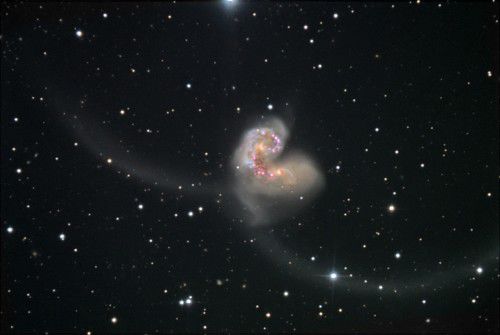THE ANU’s Associate Professor Helmut Jerjen is explaining work by an international team of researchers showing that the dwarf galaxies around our own, for example the Magellanic Clouds, are the result of an ancient intergalactic collision.
“The current best theory predicts there should be about 1,000 satellite galaxies, randomly distributed around the Milky Way. But after searching the northern skies for the past 10 years, only 13 more Milky Way companions were found, taking the total to 24,” Associate Professor Jerjen said.
“All the satellite galaxies are distributed in a flat plane, almost perpendicular to the disk of our Milky Way.”
The team has been studying the ferris wheel of small galaxies strewn around the Milky Way, such as the Magellanic Clouds.
Milky Way’s nearest neighbour, the Andromeda galaxy, has a similar stream of satellite galaxies orbiting in a plane, although at a different angle to the Milky Way’s.
Professor Jerjen argues it is likely most large galaxies have had a close encounter or merged with another galaxy at least once in their life, and points to the example of the Antenna galaxy, which shows such a collision in progress.
“With new cameras you have the ability to probe large areas around galaxies, and you start to see these stellar streams and satellite galaxies,” says Jerjen. “They’re quite a common feature, which is something unexpected.”
He now plans to search for these elusive Milky Way satellite galaxies over the entire southern skies using the ANU SkyMapper telescope to clarify the situation.
Here’s a short video showing a simulation of the process.
[Image courtesy Bob and Bill Twardy/Adam Block/NOAO/AURA/NSF]
The post ANU researchers claim galactic breakthrough appeared first on Canberra CityNews.
